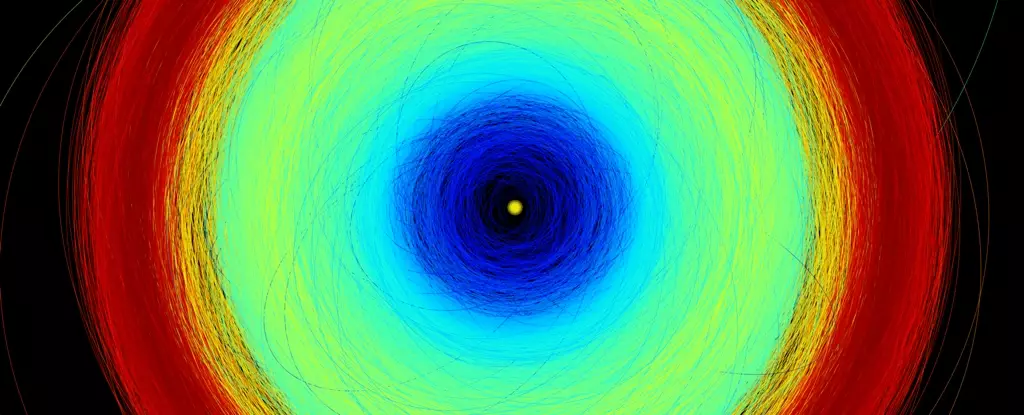The Gaia mission, known for its incredible work charting stars in the Milky Way Galaxy, has also proven to be an expert asteroid hunter. Recent reports from astronomers have highlighted Gaia’s success in spotting more moons of asteroids within our solar system. Upon confirmation of the Gaia data from its release 3, an impressive 352 binary asteroids will be added to the known count. This revelation nearly doubles the previously known number of asteroids with moons. The spacecraft’s observations have unveiled possible moons orbiting around at least 350 asteroids, classifying them as binary systems. These findings, in addition to the previously known binary asteroids, showcase the complexity of the asteroid population in our solar system.
The Significance of Astrometry
Traditionally, astrometry has been perceived as a mundane aspect of astronomy, focusing on the precise study of the positions of celestial objects in space. However, the importance of astrometry lies in its ability to aid in the detection of elusive entities such as planets around stars. With the gravitational effects of planets causing subtle shifts in stellar positions, astrometric measurements become crucial in identifying these celestial bodies. Gaia’s exceptional astrometric capabilities have allowed astronomers to detect similar shifts in the positions of asteroids, indicating the presence of companions influencing their trajectories in space.
Through detailed spectroscopic observations, Gaia has not only accurately determined the positions and motions of asteroids but has also provided valuable insights into their composition. By analyzing the reflected light spectra from each asteroid, scientists can decipher the surface composition of these celestial bodies. The forthcoming data releases from Gaia, particularly data release 4, are expected to offer further measurements that will enhance our understanding of asteroid chemistry and composition.
The Solar System comprises a diverse array of celestial objects, including planets, moons, rings, comets, and asteroids. Often regarded as remnants of planet formation, asteroids and comets offer valuable information about the conditions present in the original nebula where the Solar System originated. Gaia’s measurements have shed light on the prevalence of binary asteroids, illustrating that they are a common occurrence among small rocky and icy bodies throughout the Solar System.
As scientists categorize asteroids into different families based on their orbits and characteristics, the discovery of more binary asteroids underscores the dynamic nature of these objects. Binary asteroids provide evidence of collisions, re-coalescence, and interactions in the vastness of space. Gaia’s precise astrometric measurements are revolutionizing the field of asteroid studies, offering new avenues for research on the evolution of these celestial bodies and their orbits.
Moving forward, Gaia and other telescope observations are poised to play a pivotal role in unraveling the mysteries surrounding binary asteroids and their formation. By gathering more data and conducting comprehensive studies, astronomers hope to gain fresh insights into the origins and behaviors of these captivating celestial objects. Far from being a mundane exercise, the field of astrometry continues to deepen our knowledge of the solar system’s intricate tapestry of celestial bodies, thanks to the groundbreaking work of missions like Gaia.


Leave a Reply